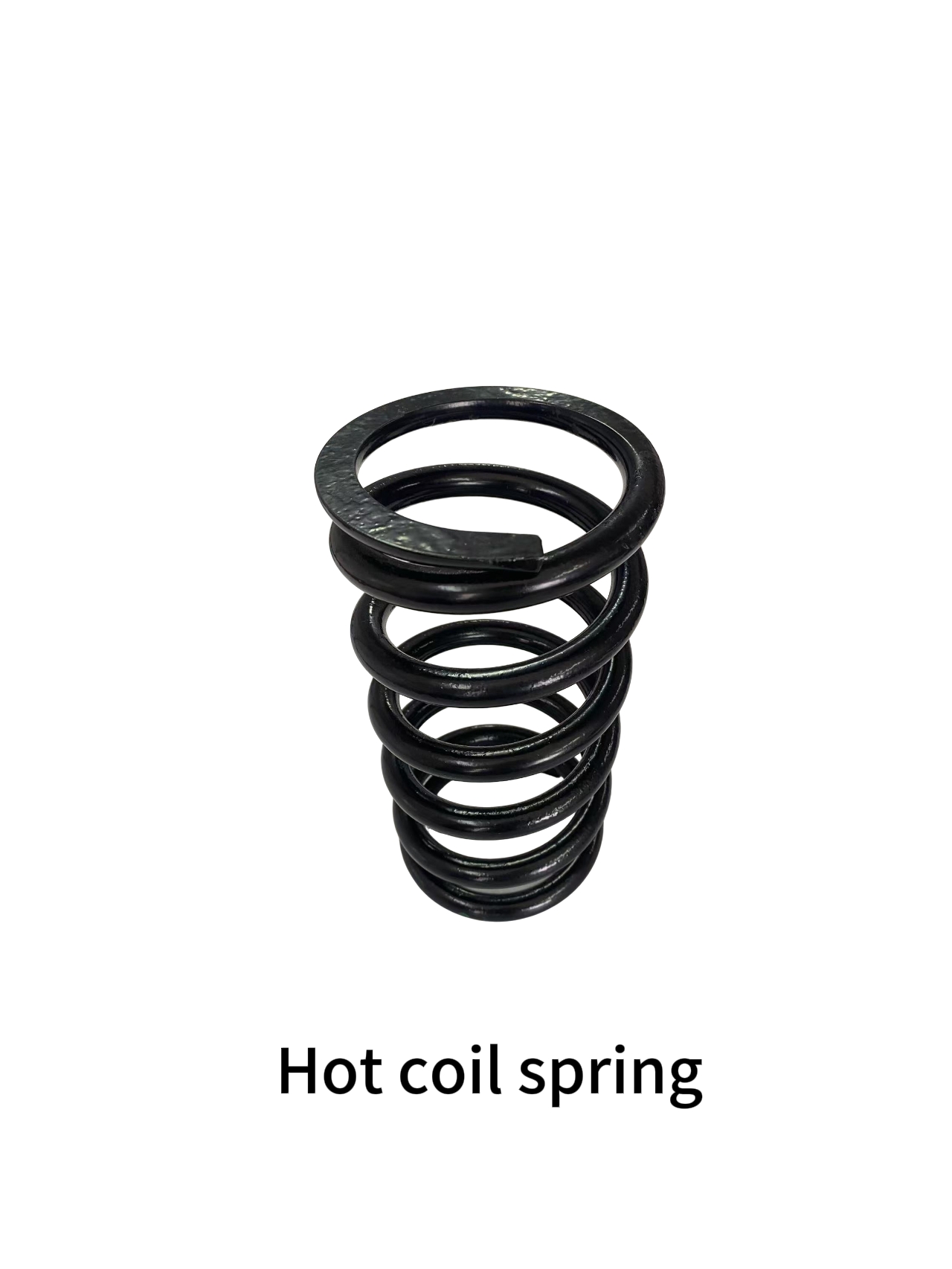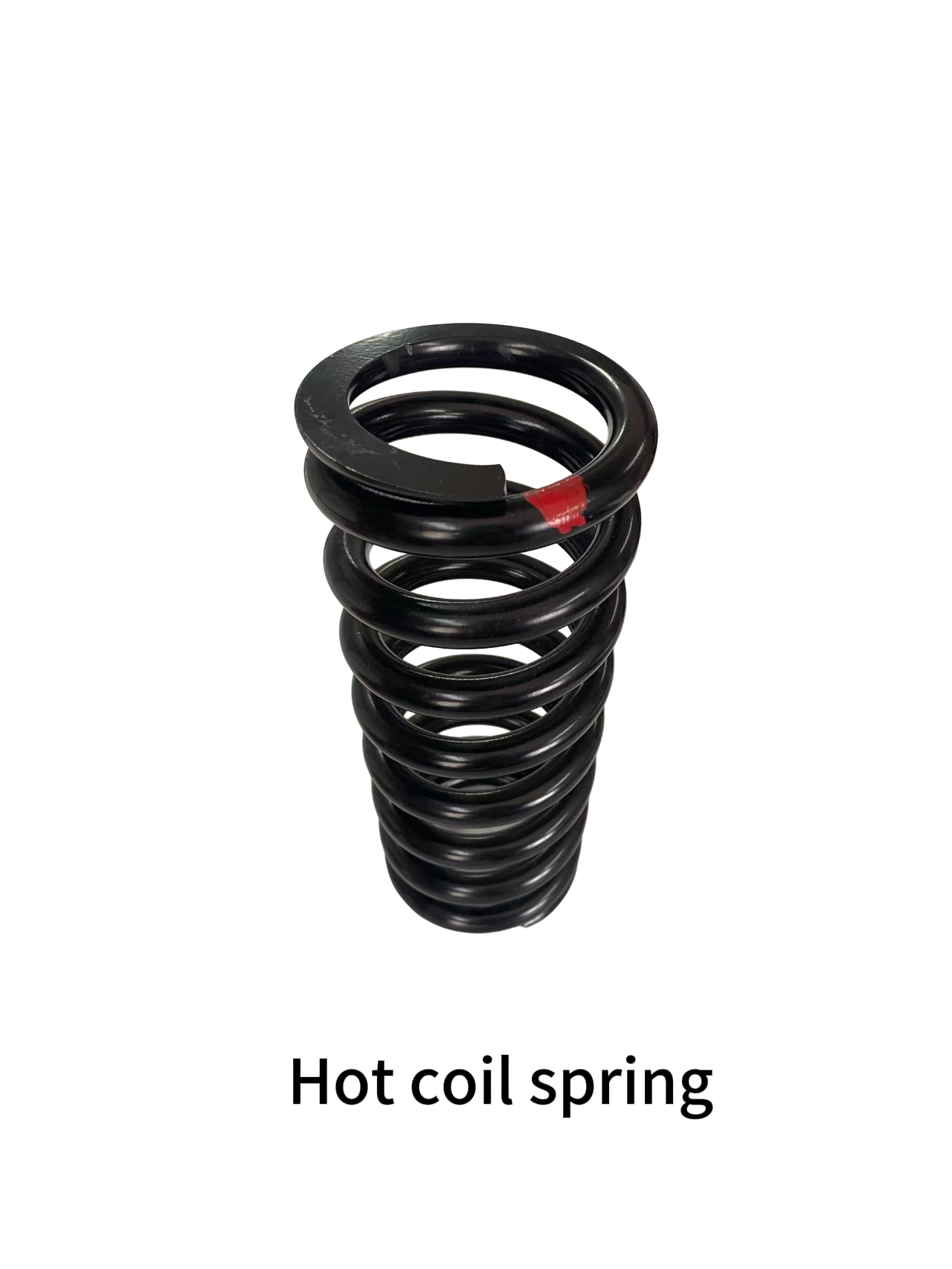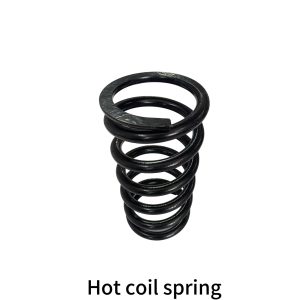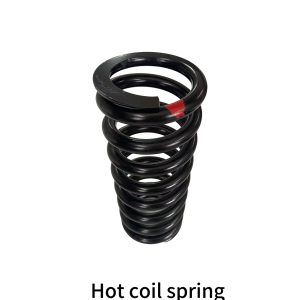Hot-Wound Springs
Definition: Hot-wound springs are helical springs formed at high temperatures (typically above the material’s recrystallization temperature), primarily used for heavy-load, high-impact, or extreme environment applications.
- Hot-Wound vs Cold-Wound Springs
| Comparison | Hot-Wound Springs | Cold-Wound Springs |
| Forming Temp. | High temperature (~900°C+) | Room temperature |
| Material | Large-diameter bars (Φ>16mm) | Steel wire (Φ<16mm) |
| Applications | Heavy machinery, railways, mining, defense | Electronics, vehicle suspensions, small mechanisms |
| Strength | Higher (due to stress relief) | Relatively lower |
| Surface Finish | Requires post-treatment (e.g., shot peening) | Smooth, ready-to-use |
2.Manufacturing Process
•Material Heating: Spring steel bars (e.g., 60Si2MnA, 55CrSi) are heated to austenitizing temperature (~850–950°C).
•Hot Coiling: Formed into a helix shape using a coiling machine while red-hot.
•Quenching + Tempering: Rapid cooling (quenching) followed by medium-temperature tempering for elasticity and toughness.
•Surface Treatment: Shot peening, anti-corrosion coatings (e.g., zinc plating, epoxy).
- Key Features
- High Load Capacity: Suitable for static or low-frequency heavy loads (e.g., railway buffer springs).
- Fatigue Resistance: Hot-working refines grain structure for extended service life.
- Size Flexibility: Can produce extra-large diameters (e.g., Φ200mm+) or custom shapes.
- Typical Applications
- Rail Transport: Train bogie suspension springs, coupler systems.
- Construction Machinery: Excavator and crane suspension systems.
- Defense Equipment: Tank track buffers, artillery recoil mechanisms.
- Energy Sector: Wind turbine pitch control springs.
- Key Selection Parameters
- Material: 60Si2MnA (common), 55CrSi (heat-resistant), 50CrVA (high fatigue strength).
- Operating Temp.: High-temp environments require heat-resistant alloys (e.g., Inconel 718).
- Load Type: Impact loads demand high toughness; static loads prioritize stiffness.
- Corrosion Resistance: Coatings (e.g., Dacromet) for humid/corrosive environments.
- Common Issues & Solutions
- Issue 1: Post-Coiling Deformation
Cause: Uneven cooling or residual stress.
Solution: Optimize quenching and tempering processes. - Issue 2: Premature Fracture
Cause: Material defects or surface cracks.
Solution: Enhance non-destructive testing (e.g., magnetic particle inspection) and shot peening. - Issue 3: Insufficient Stiffness
Cause: Over-tempering reduces hardness.
Solution: Adjust heat treatment parameters.
- Precautions
- Avoid Cold Adjustment: Do not forcibly correct hot-wound springs post-forming to prevent brittleness.
- Routine Maintenance: Inspect for cracks or deformation under heavy loads.
- Custom Designs: Validate stress distribution via finite element analysis (FEA).
Shuangyuan produce hot coil spring with wire diameter from 20mm to 60mm.








